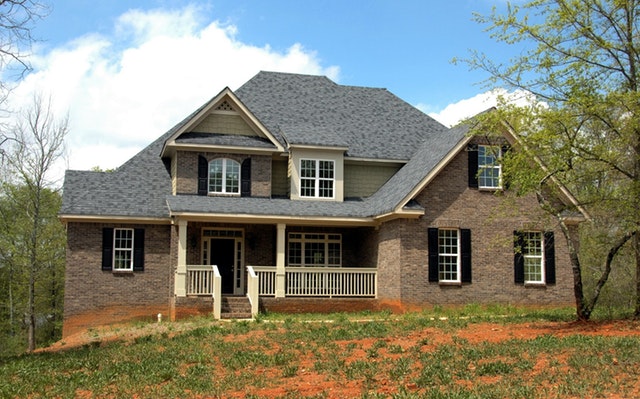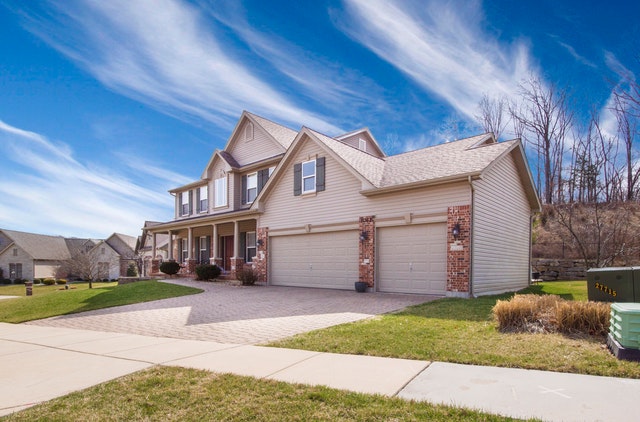
Last week’s economic reporting included readings on inflation, core inflation, and minutes of the Fed’s Federal Open Market Committee meeting held on September 22 and 23. Weekly readings on mortgage rates and jobless claims were also published.
September’s Consumer Price Index rose by 0.10 percent to 0.40 percent. The Core Consumer Price Index for September, which excludes volatile food and fuel sectors, rose by 0.10 percent to 0.20 percent and fell short of the expected reading of 0.30 percent growth.
Feds’ FOMC Meeting Minutes: Policymakers Consider Tapering Securities Purchases
Minutes of the Federal Open Market Committee meeting held September 21 and 22 indicated that policymakers discussed when to taper the Fed’s purchase of U.S. Treasuries and Mortgage-Backed Securities. Opinions were mixed as some policymakers recommended faster tapering of asset purchases and others were concerned about the potentially negative impact on financial markets if the Fed reduced its asset purchases too quickly. No specific dates for tapering asset purchases were set during the current FOMC meeting, but analysts expected the Committee to announce its plan for tapering asset purchases at its next meeting.
FOMC members also discussed inflation and were divided on their forecasts for inflation. While some members expected high inflationary growth in 2022, other FOMC members said that Covid-related bottlenecks in supply chains caused higher inflation in the near term.
Mortgage Rates Rise as Jobless Claims Fall
Freddie Mac reported higher average mortgage rates last week as rates for 30-year fixed-rate mortgages rose by six basis points to 3.05 percent. The average rate for 15-year fixed-rate mortgages rose by seven basis points to 2.30 percent; rates for 5/1 adjustable-rate mortgage rose averaged 2.55 percent and were three basis points higher Discount points averaged 0.70 percent for fixed-rate mortgages and 0.20 percent for 5/1 adjustable rate mortgages.
Initial jobless claims fell to 293,000 new claims filed as compared to the previous week’s reading of 329,000 first-time claims filed. Continuing jobless claims also fell with 2.59 million ongoing claims filed; 2.73 million ongoing claims were filed in the previous week.
What’s Ahead
This week’s scheduled economic reporting includes readings from the National Association of Home Builders on housing market conditions. Reporting on sales of previously-owned homes, housing starts, and building permits issued are expected; weekly readings on mortgage rates and jobless claims will also be released.
 Last week’s economic reporting included readings from the National Association of Home Builders Housing Market Index, data on sales of new and previously-owned homes, and weekly reports on mortgage rates and jobless claims.
Last week’s economic reporting included readings from the National Association of Home Builders Housing Market Index, data on sales of new and previously-owned homes, and weekly reports on mortgage rates and jobless claims. March readings for S&P CoreLogic Case-Shiller Home Price Indices rose to their highest level since 2005 in March. National home prices rose by 13.20 percent year-over-year as compared to February’s reading of 12.00 percent growth. The Case-Shiller 20-City Home Price Index reported average year-over-year home price gains of 13.30 percent in March. Phoenix, Arizona continued to lead the 20-City Index with a year-over-year home price growth of 20 percent. San Diego, California followed with home price growth of 19.10 percent; Seattle, Washington reported year-over-year home price growth of 18.30 percent.
March readings for S&P CoreLogic Case-Shiller Home Price Indices rose to their highest level since 2005 in March. National home prices rose by 13.20 percent year-over-year as compared to February’s reading of 12.00 percent growth. The Case-Shiller 20-City Home Price Index reported average year-over-year home price gains of 13.30 percent in March. Phoenix, Arizona continued to lead the 20-City Index with a year-over-year home price growth of 20 percent. San Diego, California followed with home price growth of 19.10 percent; Seattle, Washington reported year-over-year home price growth of 18.30 percent. The national reading for home builder confidence rose one point to an index reading of 83 in April; the National Association of Home Builders predicted a reading of 84. Component readings for April’s national index readings were mixed. Builder confidence in current market conditions for single-family homes rose one point to 88. Builder confidence in market conditions for single-family homes in the next six months fell two points to 81 but homebuilder confidence in buyer traffic in new home developments rose two points to an index reading of 75.
The national reading for home builder confidence rose one point to an index reading of 83 in April; the National Association of Home Builders predicted a reading of 84. Component readings for April’s national index readings were mixed. Builder confidence in current market conditions for single-family homes rose one point to 88. Builder confidence in market conditions for single-family homes in the next six months fell two points to 81 but homebuilder confidence in buyer traffic in new home developments rose two points to an index reading of 75. The S&P Case-Shiller National Home Price Index posted its highest gain in nearly 15 years with a year-over-year home price growth rate of 11.20 percent in January. The December 2020 National Home Price Index reported 10.40 percent home price growth. The S&P Case-Shiller 20-City Home Price Index reported 11.10 percent year-over-year growth with 19 of 20 cities reporting higher home prices. Cleveland, Ohio was the only city reporting no home price growth in January. Detroit, Michigan reported home price growth data for the first time in nearly a year.
The S&P Case-Shiller National Home Price Index posted its highest gain in nearly 15 years with a year-over-year home price growth rate of 11.20 percent in January. The December 2020 National Home Price Index reported 10.40 percent home price growth. The S&P Case-Shiller 20-City Home Price Index reported 11.10 percent year-over-year growth with 19 of 20 cities reporting higher home prices. Cleveland, Ohio was the only city reporting no home price growth in January. Detroit, Michigan reported home price growth data for the first time in nearly a year. Builder confidence in housing market conditions reached a new record high in November according to the National Association of Home Builders. November’s index reading of 90 was five points higher than in October. Index readings over 50 indicate positive builder sentiment toward market conditions. Readings for the Housing Market Index fell below 50 in April and May as the COVID-19 pandemic grew.
Builder confidence in housing market conditions reached a new record high in November according to the National Association of Home Builders. November’s index reading of 90 was five points higher than in October. Index readings over 50 indicate positive builder sentiment toward market conditions. Readings for the Housing Market Index fell below 50 in April and May as the COVID-19 pandemic grew. Last week’s economic reports included readings from the National Association of Home Builders on housing markets along with Commerce Department data on housing starts and building permits issued. Weekly reports on mortgage rates and unemployment claims were also released.
Last week’s economic reports included readings from the National Association of Home Builders on housing markets along with Commerce Department data on housing starts and building permits issued. Weekly reports on mortgage rates and unemployment claims were also released. Home builder confidence in housing market conditions stayed flat in September. The National Association of Home Builders Housing Market Index reported an index reading of 67, which matched expectations and NAHB’s housing market reading for August. Analysts cited recent tariffs on building materials as a significant cause of easing builder confidence.
Home builder confidence in housing market conditions stayed flat in September. The National Association of Home Builders Housing Market Index reported an index reading of 67, which matched expectations and NAHB’s housing market reading for August. Analysts cited recent tariffs on building materials as a significant cause of easing builder confidence. Positive economic growth numbers are always cause for celebration and the second quarter GDP just went vertical. After nearly four years of sub-par growth, the real GDP hit 4.1 percent in the second quarter.
Positive economic growth numbers are always cause for celebration and the second quarter GDP just went vertical. After nearly four years of sub-par growth, the real GDP hit 4.1 percent in the second quarter. Homebuilder confidence in housing market conditions dipped two points in January; ongoing challenges including labor shortages and materials costs were cited by the National Association of Home Builders, which provides monthly readings on home builder sentiment. Three component readings of the Housing Market Index declined by one point each. Readings for current sales conditions, housing market conditions for the next six months and for buyer traffic within new single-family housing developments were 79, 78 and 54 respectively.
Homebuilder confidence in housing market conditions dipped two points in January; ongoing challenges including labor shortages and materials costs were cited by the National Association of Home Builders, which provides monthly readings on home builder sentiment. Three component readings of the Housing Market Index declined by one point each. Readings for current sales conditions, housing market conditions for the next six months and for buyer traffic within new single-family housing developments were 79, 78 and 54 respectively.